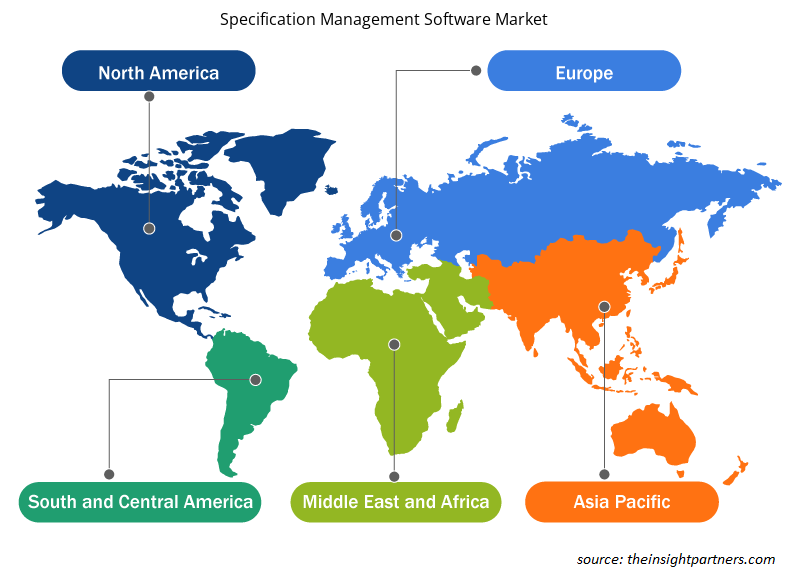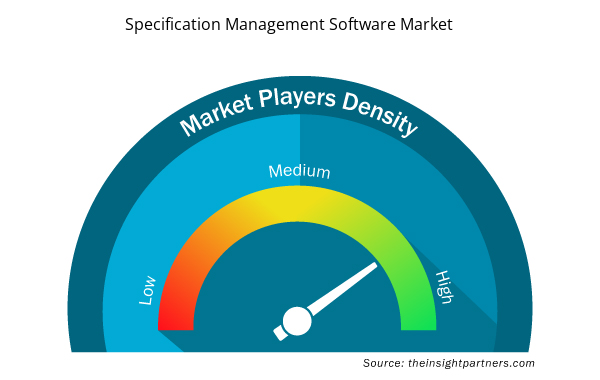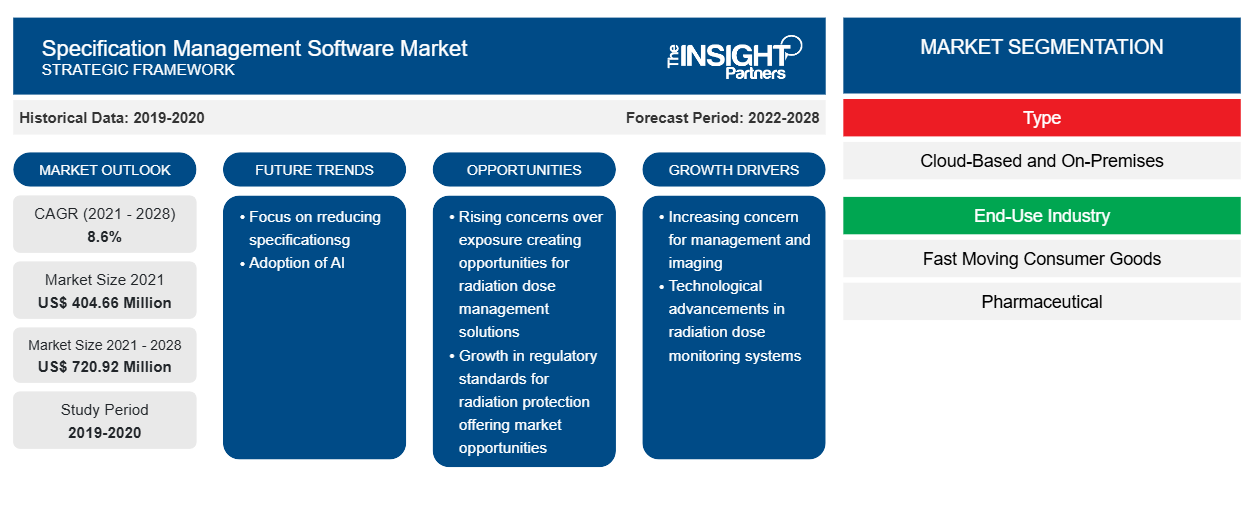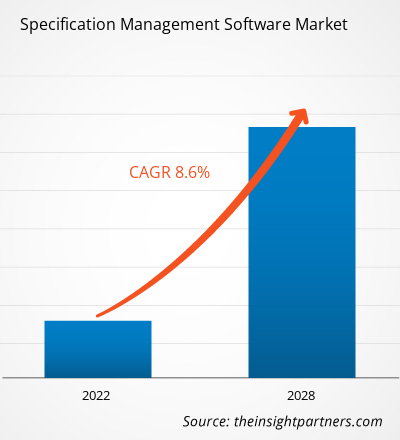Der Markt für Spezifikationsmanagement-Software soll von 404,66 Millionen US-Dollar im Jahr 2021 auf 720,92 Millionen US-Dollar im Jahr 2028 wachsen; für den Zeitraum 2021–2028 wird eine durchschnittliche jährliche Wachstumsrate (CAGR) von 8,6 % geschätzt.
Pharmazeutische Produkte werden durch die Kombination verschiedener Arten von Chemikalien oder biologischen Substanzen hergestellt. Der Herstellungsprozess umfasst eine Reihe von Grundoperationen, darunter Granulierung, Abfüllung, Mischung, Mahlen, Tablettenpressen und Beschichtung. Die Hersteller müssen bestimmte Vorschriften einhalten und die entsprechenden Richtlinien befolgen, um die genaue Menge der Chemikalien beizubehalten und ihre Qualität aufrechtzuerhalten. Die an der Herstellung von Arzneimitteln beteiligten Geräte müssen gemäß den guten Herstellungspraktiken (GMP) betrieben und gewartet werden. Angesichts der kontinuierlich steigenden Nachfrage nach Medikamenten/Arzneimitteln auf der ganzen Welt investieren Pharmaunternehmen erheblich in die Implementierung verschiedener IT-Lösungen in verschiedenen Betrieben. Beispielsweise wird Spezifikationsmanagementsoftware zur genauen und präzisen Spezifikation der bei der Herstellung von Arzneimitteln verwendeten Chemikalien eingesetzt; dies hilft den Pharmaunternehmen, Qualität sowie die Einhaltung gesetzlicher Vorschriften über die gesamte Wertschöpfungskette der Branche hinweg sicherzustellen.
Komplexe Lieferketten, strenge Vorschriften und Probleme mit der Datenintegrität wirken sich auf die Qualitätsstrategien und -prozesse in der Pharmaindustrie aus. Die FDA und andere vergleichbare Behörden legen großen Wert auf die Einhaltung der Vorschriften durch Pharmaunternehmen und gewährleisten so die Einhaltung von Qualitätsstandards in der gesamten globalen Pharmaindustrie. Die Daten der Spezifikationsmanagementsoftware ermöglichen es Benutzern, konsistente Kennzahlen, Risikoberechnungen und andere Trendanalysen aufrechtzuerhalten. Die Funktion der Spezifikationsmanagementsoftware umfasst Rohstoffmanagement, Formel- und Inhaltsstoffmanagement, Verpackungsmanagement, Dokumentenmanagement und Qualitätsmanagement. Pilgrim Quality Solutions bietet beispielsweise SmartSolve Pharmaceutical QMS-Lösungen an, die Dokumentenmanagement, Management von Abweichungen von den Spezifikationen, Rückrufmanagement, Lieferantenqualitätsmanagement usw. präzise und genau handhaben.
Passen Sie diesen Bericht Ihren Anforderungen an
Sie erhalten kostenlos individuelle Anpassungen an jedem Bericht, einschließlich Teilen dieses Berichts oder einer Analyse auf Länderebene, eines Excel-Datenpakets sowie tolle Angebote und Rabatte für Start-ups und Universitäten.
- Holen Sie sich die wichtigsten Markttrends aus diesem Bericht.Dieses KOSTENLOSE Beispiel umfasst eine Datenanalyse von Markttrends bis hin zu Schätzungen und Prognosen.
Auswirkungen der COVID-19-Pandemie auf den Markt für Spezifikationsmanagement-Software in Nordamerika
Die COVID-19-Pandemie hat viele Branchen in nordamerikanischen Ländern wie den USA, Kanada und Mexiko schwer getroffen.Der beispiellose Anstieg der Zahl der COVID-19-Fälle in den USA und die anschließende Verhängung verschiedener Beschränkungen zur Eindämmung der Ausbreitung des Virus in den ersten beiden Quartalen 2020 beeinträchtigten die Leistung verschiedener Unternehmen. Die technologischen Investitionen erlitten 2020 einen erheblichen Rückgang. Die Pandemie wirkte sich jedoch auf die Arbeitsweise der Unternehmen aus und ermutigte sie, digitale Plattformen für die Durchführung von Geschäftsabläufen von entfernten Standorten aus zu nutzen. Nordamerika ist aufgrund günstiger Regierungspolitiken zur Förderung von Innovationen und zur Stärkung der Infrastrukturkapazitäten bei der Akzeptanz und Entwicklung modernster Technologien führend. Da es in den USA eine hohe Dichte an Akteuren auf dem Markt für Spezifikationsmanagementsoftware gibt , hat der Ausbruch die Produktion jedes einzelnen stark beeinträchtigt, insbesondere im ersten Quartal 2020, als es strenge Beschränkungen für den Transport gab.
Einblicke in den Markt für Spezifikationsmanagementsoftware
Florierender Konsumgütersektor treibt Wachstum im Markt für Spezifikationsmanagement-Software voran
Der globale Sektor für schnelldrehende Konsumgüter (FMCG) steht unter ständigem Druck, neue Produkte auf den Markt zu bringen. Alle Produkteinführungen durchlaufen einen Produktentwicklungszyklus, um jedes Projekt in einem bestimmten Zeitrahmen fertigzustellen. Der FMCG-Sektor erlebt ständig ein gesundes Wachstum, das hauptsächlich auf die Einführung von Smart Retailing zurückzuführen ist. Das Konzept des Smart Retailing zwingt Einzelhändler dazu, sich kontinuierlich darauf zu konzentrieren, die sich ständig weiterentwickelnden Verbraucheranforderungen zu erfüllen und den Verbrauchern ein verbessertes und bequemeres Einkaufserlebnis zu bieten. In der Konsumgüterindustrie wird Spezifikationsmanagementsoftware in Prozessen wie Rohstoffmanagement, Verpackung und Produktdetaildokumentation eingesetzt. Die Verpackung ist von größter Bedeutung, da sie das Erste ist, was Verbraucher sehen und berühren. PackIQ, ORBIS Corporation, TODAY IT, GEFCO und Amatech gehören zu den Anbietern von Verpackungsmanagement-Tools für den Einzelhandels- und Konsumgütersektor.
Darüber hinaus ist die Qualität des Produkts nach wie vor das Hauptanliegen der Verbraucher. Daher konzentrieren sich die Unternehmen, insbesondere in der Konsumgüterindustrie, kontinuierlich darauf, Produkte in Standardqualität pünktlich und problemlos zu liefern. Die daraus resultierende Anforderung, Prozesse, Dienstleistungen und Ergebnisse zu verbessern, erfordert technologische Eingriffe, was die Einführung von Spezifikationsmanagementsoftware fördert. Infolgedessen nimmt die Einführung von Spezifikationsmanagementsoftware für Dokumentenmanagement, Verpackungsmanagement und Artworkmanagement im FMCG-Sektor zu, was es Einzelhändlern weiter ermöglicht, Kundenexzellenz zu erreichen.
Typbasierte Markteinblicke
Der Markt für Spezifikationsmanagement-Software ist nach Typ in Cloud-basierte und On-Premise-Software unterteilt. Im Jahr 2020 hatte das Cloud-basierte Segment einen größeren Marktanteil.
Anwendungsbasierte Markteinblicke
Bezogen auf
Anwendung
Der Markt für Spezifikationsmanagement-Software ist in Rohstoffmanagement, Formel- und Zutatenmanagement, Verpackungsmanagement, Dokumentenmanagement und andere Anwendungen unterteilt. Im Jahr 2020 hatte das Segment Verpackungsmanagement den größten Marktanteil.
Die Akteure auf dem Markt für Spezifikationsmanagement-Software verfolgen Strategien wie Fusionen, Übernahmen und Marktinitiativen, um ihre Position auf dem Markt zu behaupten. Nachfolgend sind einige Entwicklungen der wichtigsten Akteure aufgeführt:
- Im Jahr 2021 kündigte Emerson an
es ist
Kapitalbeteiligung an Fluxafür seine
Prozess- und Wissensmanagement-Software (PKMTM)Das
verwaltet nahtlos Produkt- und Prozessspezifikationen während des gesamten Produktentwicklungszyklus. - Im Mai 2021 wurde Specright Silbermitglied des GS1 US Solution Partner Program. Diese Auszeichnung zeigt das Engagement von Specright, Lösungen und Dienstleistungen anzubieten, die eine effiziente, schnelle und genaue Implementierung von GS1-Standards ermöglichen.
Regionale Einblicke in den Markt für Spezifikationsmanagementsoftware
Die regionalen Trends und Faktoren, die den Markt für Spezifikationsmanagement-Software während des gesamten Prognosezeitraums beeinflussen, wurden von den Analysten von Insight Partners ausführlich erläutert. In diesem Abschnitt werden auch die Marktsegmente und die Geografie von Spezifikationsmanagement-Software in Nordamerika, Europa, im asiatisch-pazifischen Raum, im Nahen Osten und Afrika sowie in Süd- und Mittelamerika erörtert.

- Erhalten Sie regionale Daten zum Markt für Spezifikationsmanagement-Software
Umfang des Marktberichts zur Spezifikationsmanagementsoftware
| Berichtsattribut | Details |
|---|---|
| Marktgröße im Jahr 2021 | 404,66 Millionen US-Dollar |
| Marktgröße bis 2028 | 720,92 Millionen US-Dollar |
| Globale CAGR (2021 - 2028) | 8,6 % |
| Historische Daten | 2019-2020 |
| Prognosezeitraum | 2022–2028 |
| Abgedeckte Segmente | Nach Typ
|
| Abgedeckte Regionen und Länder | Nordamerika
|
| Marktführer und wichtige Unternehmensprofile |
|
Dichte der Marktteilnehmer für Spezifikationsmanagement-Software: Die Auswirkungen auf die Geschäftsdynamik verstehen
Der Markt für Spezifikationsmanagement-Software wächst rasant, angetrieben durch die steigende Nachfrage der Endnutzer aufgrund von Faktoren wie sich entwickelnden Verbraucherpräferenzen, technologischen Fortschritten und einem größeren Bewusstsein für die Vorteile des Produkts. Mit steigender Nachfrage erweitern Unternehmen ihr Angebot, entwickeln Innovationen, um die Bedürfnisse der Verbraucher zu erfüllen, und nutzen neue Trends, was das Marktwachstum weiter ankurbelt.
Die Marktteilnehmerdichte bezieht sich auf die Verteilung der Firmen oder Unternehmen, die in einem bestimmten Markt oder einer bestimmten Branche tätig sind. Sie gibt an, wie viele Wettbewerber (Marktteilnehmer) in einem bestimmten Marktraum im Verhältnis zu seiner Größe oder seinem gesamten Marktwert präsent sind.
Die wichtigsten auf dem Markt für Spezifikationsmanagement-Software tätigen Unternehmen sind:
- Accompa, Inc.
- Emerson Electric Co.
- VERSICHERUNG
- Esko
- Isolokalität
Haftungsausschluss : Die oben aufgeführten Unternehmen sind nicht in einer bestimmten Reihenfolge aufgeführt.

- Überblick über die wichtigsten Akteure auf dem Markt für Spezifikationsmanagement-Software
Der globale Markt für Spezifikationsmanagement-Software ist wie folgt segmentiert:
Nach Typ
- Cloudbasiert
- Vor Ort
Nach Endverbrauchsbranche
- Schnelldrehende Konsumgüter (FMCG)
- Pharmazeutische
- Sonstiges
Nach Anwendung
- Rohstoffmanagement
- Rezeptur- und Zutatenverwaltung
- Verpackungsmanagement
- Dokumentenmanagement
- Andere Anwendungen
Nach Geografie
- Nordamerika
- UNS
- Kanada
- Mexiko
- Europa
- Frankreich
- Deutschland
- Italien
- Vereinigtes Königreich
- Russland
- Restliches Europa
- Asien-Pazifik (APAC)
- China
- Indien
- Südkorea
- Japan
- Australien
- Restlicher Asien-Pazifik-Raum
- Naher Osten und Afrika (MEA)
- Südafrika
- Saudi-Arabien
- Vereinigte Arabische Emirate
- Rest von MEA
- Südamerika (SAM)
- Brasilien
- Argentinien
- Rest von SAM
Firmenprofile
- Accompa, Inc.
- Esko-Graphics BV.
- Emerson Electric Co.
- Lascom
- Siemens AG
- SAP SE
- DocXellent
- Isolokalität
- PiLog-Gruppe
- QADEX
- Spezialist
- Historische Analyse (2 Jahre), Basisjahr, Prognose (7 Jahre) mit CAGR
- PEST- und SWOT-Analyse
- Marktgröße Wert/Volumen – Global, Regional, Land
- Branche und Wettbewerbsumfeld
- Excel-Datensatz



Report Coverage
Revenue forecast, Company Analysis, Industry landscape, Growth factors, and Trends

Segment Covered
This text is related
to segments covered.

Regional Scope
North America, Europe, Asia Pacific, Middle East & Africa, South & Central America

Country Scope
This text is related
to country scope.
Häufig gestellte Fragen
The trend of using advanced technologies is prevailing across the world. Due to rising business activities in pharmaceutical, food & beverages, consumer goods, and manufacturing industries globally, the adoption of advanced specification management tools is ready to capture the attention of massive end users. Furthermore, it has been observed that more than 75% of enterprises are planning to foster their digital transformation to have business recovery out of 2020. The enterprises are looking forward to adopting collaborative and cost-effective solutions to achieve their pre-determined digital goals.
The US, Canada, and Mexico are the key contributors to the specification management software market in North America. North America is one of the frontrunners in terms of developing and accepting new and advanced technologies across all markets, including consumer products and pharmaceuticals. The significant adoption of technologies in the last five years across the industries to automate processes and simplify other management operations has fueled the demand for specification management software in the region.
Packaging across FMCG and pharmaceutical products as per standards should convey important information to its consumers. For instance, a drug packaging should include a description of the product's medicinal form, strength, and, if appropriate, method of application; the pack size, which is expressed in terms of the number, weight, or volume of the product in the final container. Similarly, for smoking products, there are specification to be included in the packaging of the product such as caution statement and picture for heath in smoking products should cover 80% of its packaging.
Packaged food, toiletries, beverages, stationery, cleaning and laundry products, plastic goods, personal care products, and less priced consumer electronics, such as mobile phones and headphones, are examples of fast-moving consumer goods. Customers connect with businesses through different online and offline channels, therefore digitization is quickly becoming a priority for FMCG brands.
Companies in the FMCG, pharmaceuticals, logistics, and manufacturing industries are scaling up their business activities to meet the growing demands, which is one of the key forces driving the adoption of advanced specification management tools. More than 75% of enterprises are planning to foster their digital transformation to recover from the business loss incurred in 2020 due to the COVID-19 pandemic. The enterprises are looking ahead to adopt cost-effective and collaborative solutions to accomplish their predetermined digital goals.
Pharmaceutical products are manufactured by combining different types of chemicals or biological substances. The manufacturing process involves a range of unit operations, including granulation, filling, blending, milling, tablet pressing, and coating. The manufacturers need to abide by specific regulations and follow the apt guidelines to maintain the accurate amount of chemicals and sustain their quality. The equipment involved in pharmaceutical manufacturing must be run and maintained as per the good manufacturing practices (GMP). With the continuous rise in demand for medicines/drugs across the world, pharmaceutical companies are investing significantly in the implementation of various IT solutions in different operations.
Trends and growth analysis reports related to Technology, Media and Telecommunications : READ MORE..
The List of Companies - Specification Management Software Market
- Accompa, Inc.
- Emerson Electric Co.
- ENSUR
- Esko
- Isolocity
- Lascom S.A.
- PiLog Group
- QADEX
- Siemens
- Specright LLC
- SAP
The Insight Partners performs research in 4 major stages: Data Collection & Secondary Research, Primary Research, Data Analysis and Data Triangulation & Final Review.
- Data Collection and Secondary Research:
As a market research and consulting firm operating from a decade, we have published and advised several client across the globe. First step for any study will start with an assessment of currently available data and insights from existing reports. Further, historical and current market information is collected from Investor Presentations, Annual Reports, SEC Filings, etc., and other information related to company’s performance and market positioning are gathered from Paid Databases (Factiva, Hoovers, and Reuters) and various other publications available in public domain.
Several associations trade associates, technical forums, institutes, societies and organization are accessed to gain technical as well as market related insights through their publications such as research papers, blogs and press releases related to the studies are referred to get cues about the market. Further, white papers, journals, magazines, and other news articles published in last 3 years are scrutinized and analyzed to understand the current market trends.
- Primary Research:
The primarily interview analysis comprise of data obtained from industry participants interview and answers to survey questions gathered by in-house primary team.
For primary research, interviews are conducted with industry experts/CEOs/Marketing Managers/VPs/Subject Matter Experts from both demand and supply side to get a 360-degree view of the market. The primary team conducts several interviews based on the complexity of the markets to understand the various market trends and dynamics which makes research more credible and precise.
A typical research interview fulfils the following functions:
- Provides first-hand information on the market size, market trends, growth trends, competitive landscape, and outlook
- Validates and strengthens in-house secondary research findings
- Develops the analysis team’s expertise and market understanding
Primary research involves email interactions and telephone interviews for each market, category, segment, and sub-segment across geographies. The participants who typically take part in such a process include, but are not limited to:
- Industry participants: VPs, business development managers, market intelligence managers and national sales managers
- Outside experts: Valuation experts, research analysts and key opinion leaders specializing in the electronics and semiconductor industry.
Below is the breakup of our primary respondents by company, designation, and region:

Once we receive the confirmation from primary research sources or primary respondents, we finalize the base year market estimation and forecast the data as per the macroeconomic and microeconomic factors assessed during data collection.
- Data Analysis:
Once data is validated through both secondary as well as primary respondents, we finalize the market estimations by hypothesis formulation and factor analysis at regional and country level.
- Macro-Economic Factor Analysis:
We analyse macroeconomic indicators such the gross domestic product (GDP), increase in the demand for goods and services across industries, technological advancement, regional economic growth, governmental policies, the influence of COVID-19, PEST analysis, and other aspects. This analysis aids in setting benchmarks for various nations/regions and approximating market splits. Additionally, the general trend of the aforementioned components aid in determining the market's development possibilities.
- Country Level Data:
Various factors that are especially aligned to the country are taken into account to determine the market size for a certain area and country, including the presence of vendors, such as headquarters and offices, the country's GDP, demand patterns, and industry growth. To comprehend the market dynamics for the nation, a number of growth variables, inhibitors, application areas, and current market trends are researched. The aforementioned elements aid in determining the country's overall market's growth potential.
- Company Profile:
The “Table of Contents” is formulated by listing and analyzing more than 25 - 30 companies operating in the market ecosystem across geographies. However, we profile only 10 companies as a standard practice in our syndicate reports. These 10 companies comprise leading, emerging, and regional players. Nonetheless, our analysis is not restricted to the 10 listed companies, we also analyze other companies present in the market to develop a holistic view and understand the prevailing trends. The “Company Profiles” section in the report covers key facts, business description, products & services, financial information, SWOT analysis, and key developments. The financial information presented is extracted from the annual reports and official documents of the publicly listed companies. Upon collecting the information for the sections of respective companies, we verify them via various primary sources and then compile the data in respective company profiles. The company level information helps us in deriving the base number as well as in forecasting the market size.
- Developing Base Number:
Aggregation of sales statistics (2020-2022) and macro-economic factor, and other secondary and primary research insights are utilized to arrive at base number and related market shares for 2022. The data gaps are identified in this step and relevant market data is analyzed, collected from paid primary interviews or databases. On finalizing the base year market size, forecasts are developed on the basis of macro-economic, industry and market growth factors and company level analysis.
- Data Triangulation and Final Review:
The market findings and base year market size calculations are validated from supply as well as demand side. Demand side validations are based on macro-economic factor analysis and benchmarks for respective regions and countries. In case of supply side validations, revenues of major companies are estimated (in case not available) based on industry benchmark, approximate number of employees, product portfolio, and primary interviews revenues are gathered. Further revenue from target product/service segment is assessed to avoid overshooting of market statistics. In case of heavy deviations between supply and demand side values, all thes steps are repeated to achieve synchronization.
We follow an iterative model, wherein we share our research findings with Subject Matter Experts (SME’s) and Key Opinion Leaders (KOLs) until consensus view of the market is not formulated – this model negates any drastic deviation in the opinions of experts. Only validated and universally acceptable research findings are quoted in our reports.
We have important check points that we use to validate our research findings – which we call – data triangulation, where we validate the information, we generate from secondary sources with primary interviews and then we re-validate with our internal data bases and Subject matter experts. This comprehensive model enables us to deliver high quality, reliable data in shortest possible time.


 Holen Sie sich ein kostenloses Muster für diesen Bericht
Holen Sie sich ein kostenloses Muster für diesen Bericht